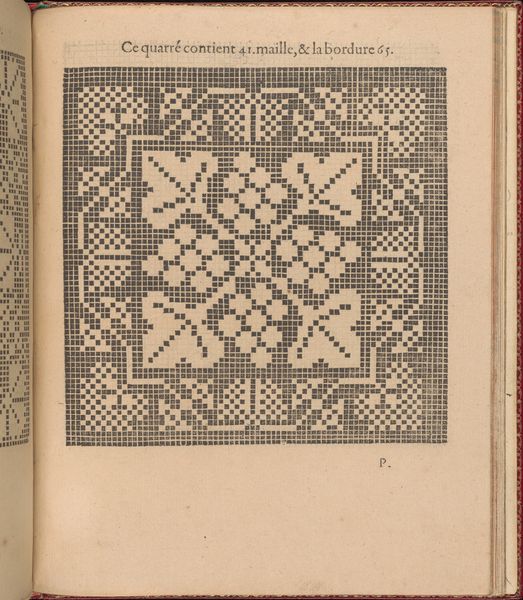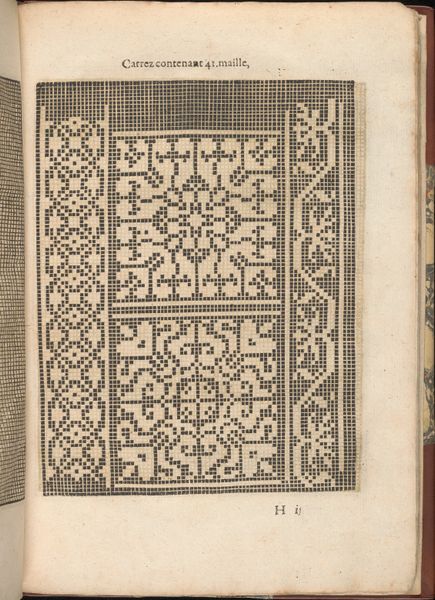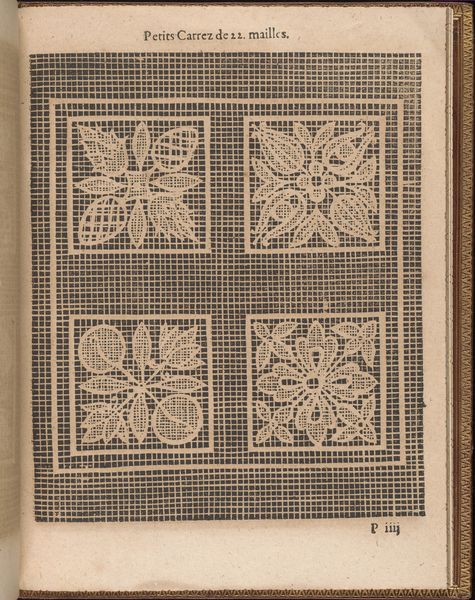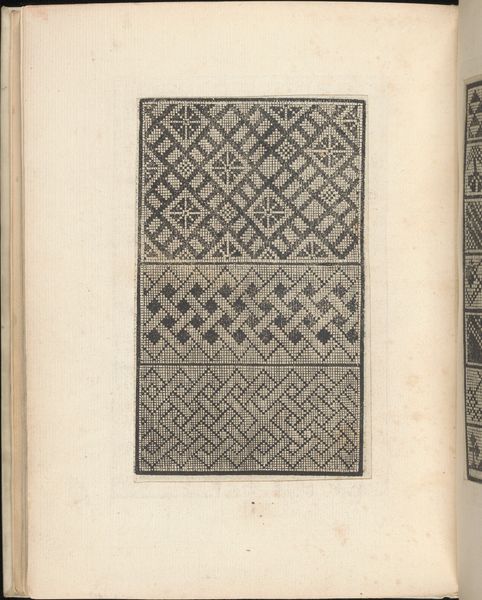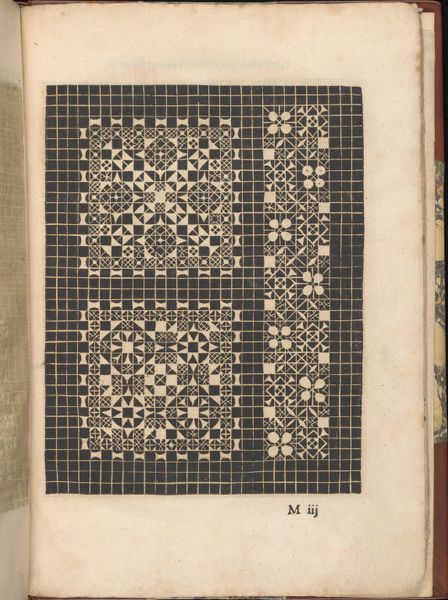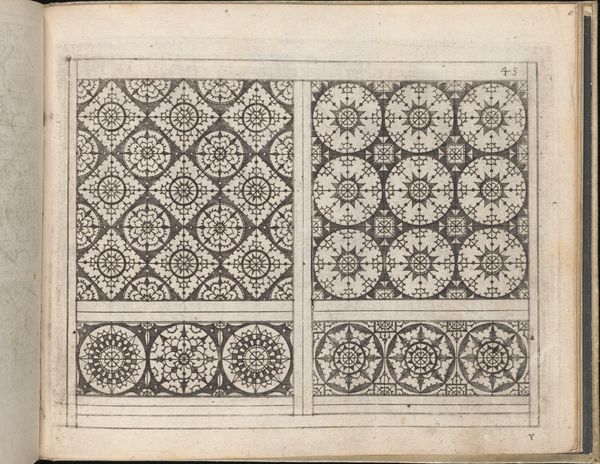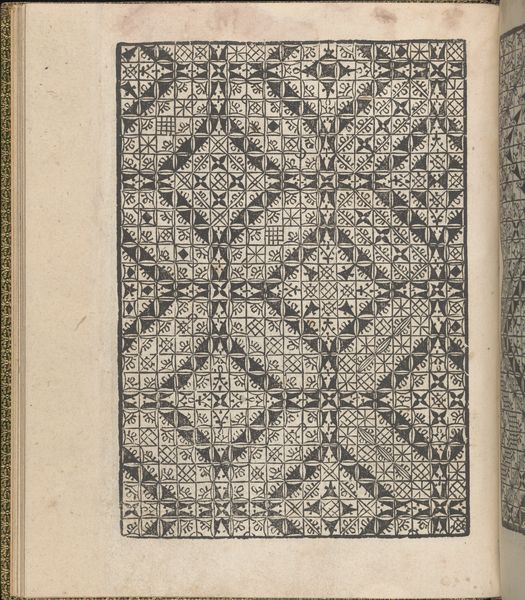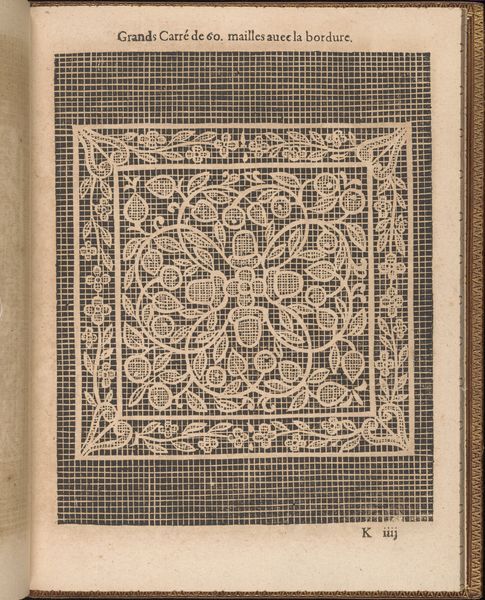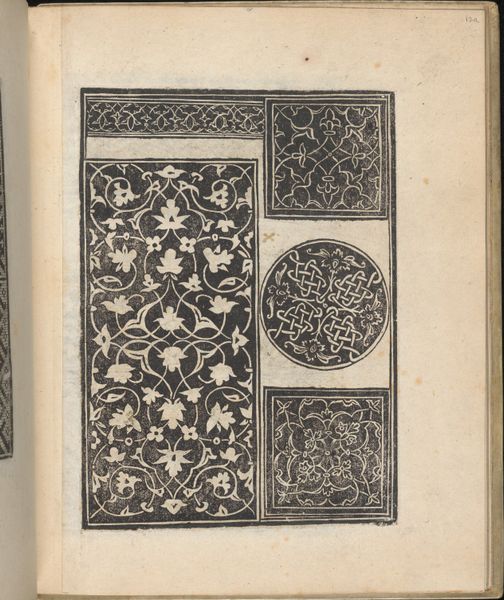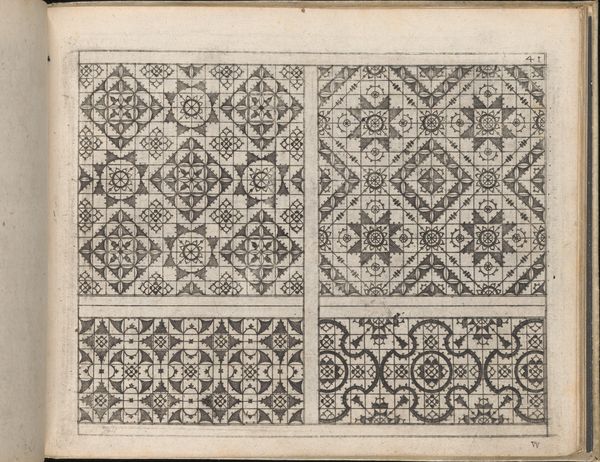
Les Secondes Oeuvres, et Subtiles Inventions De Lingerie du Seigneur Federic de Vinciolo Venitien, page 56 (recto) 1603
0:00
0:00
drawing, print, textile, paper, engraving
#
drawing
# print
#
textile
#
paper
#
11_renaissance
#
geometric
#
engraving
Dimensions: Overall: 9 7/16 x 6 1/2 in. (24 x 16.5 cm)
Copyright: Public Domain
Editor: This page is from "Les Secondes Oeuvres..." a book of embroidery patterns by Federico de Vinciolo, printed in 1603. It uses engravings on paper. There's something so appealing in seeing the repetitive geometric patterns. It makes me think about craft and labour. What strikes you most about this work? Curator: I see the fascinating intersection of craft, commerce, and early printmaking. This wasn’t fine art destined for a gallery. It was a pattern book; a practical tool offering designs for lacemakers. We need to consider the labour involved - the engraver reproducing the designs, the printer, the bookbinder and the lacemakers translating these images into tangible objects, mostly women paid very little to reproduce textiles with such refined details. What can that tell us about this artwork? Editor: It’s interesting to think of the labour that is so tied to gender, that feels relevant today as it would back then. What was the intended social purpose, though? Did everyone just create their own designs previously? Curator: Previously patterns were largely transmitted through apprenticeship. Vinciolo’s printed book allowed wider access and standardization of fashionable designs. These patterns served the aspirations of a rising merchant class, mimicking the elaborate and costly lace of the aristocracy. The "means of production", as Marx would have put it, made status markers more accessible to consumers. Are those handmade objects of luxury, tools, or an advertisement? Editor: I suppose, they're all three. The engraving as an affordable "copy" democratizes what was once an exclusive artistic language, opening opportunities for more people to produce "luxury". That changes my view of this page entirely! Curator: Indeed. By analyzing the social function of this artifact, we understand better how art blurs with everyday production. It pushes the question: what do we consider craft or commodity? Editor: That's so helpful. Thank you for sharing this lens for analyzing historical works. I will think about this materiality for other art pieces going forward.
Comments
No comments
Be the first to comment and join the conversation on the ultimate creative platform.

